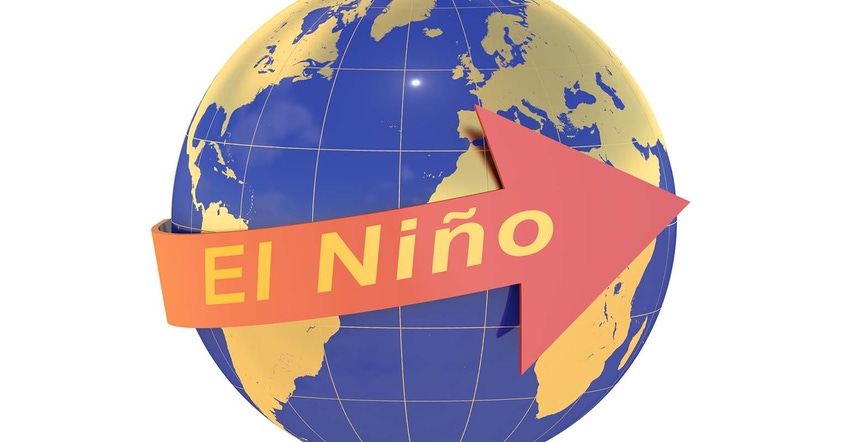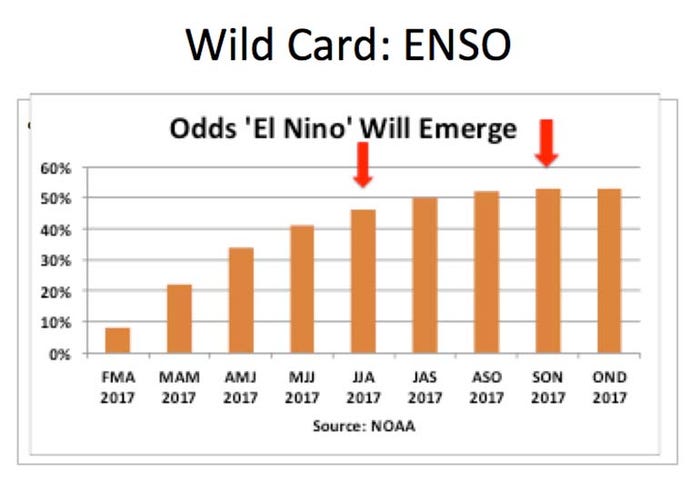
An El Nino event could develop this summer and fall after the sea surface of the Pacific Ocean warmed in February, U.S. weather forecasters said in their March outlook.
While conditions remain neutral for an El Nino event and will likely remain neutral into through May, the National Weather Service’s Climate Prediction Center said some forecasts now indicate a 50% to 55% chance an El Nino will develop from July to December.
The neutral conditions this srping may have little or no impact on U.S. corn and soybean prices, but could negatively affect yields for Argentina’s coarse grains, wheat and soybeans and for Brazil soybeans, and could give a light boost to Black Sea coarse grain yields, said Bryce Knorr, Farm Futures senior grain analyst.
“Yields in the past were sometimes very bad, sometimes very good, and everywhere in between. In the 35 summers with neutral readings since 1955, corn yields averaged 2% better than normal, with soybeans coming in 1% better,” Knorr said of U.S. crops.
An El Nino event late this summer and fall could mean an increase in this year’s corn and soybean crops, plus bigger coarse grain and soybean yields in Argentina, and lower wheat and coarse grain yields in Australia, he said.
However, Knorr concludes that it is not possible to accurately predict what will happen during an El Nino or La Nina event.

About the Author(s)
You May Also Like




